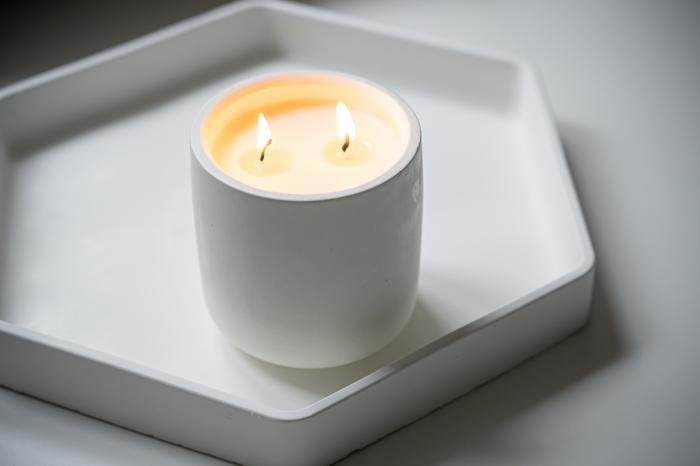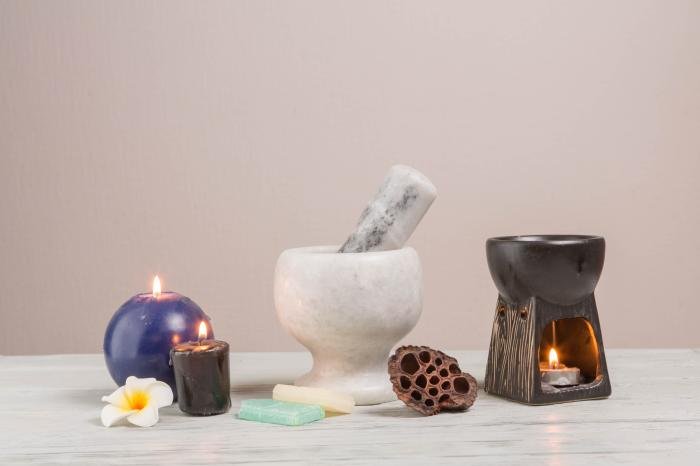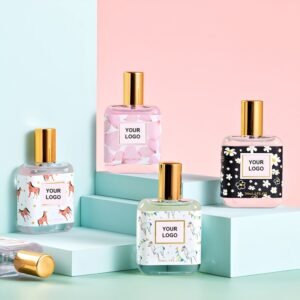Finding the right scented candles supplier can make or break your retail or hospitality business success.
The scented candles market has exploded across retail and hospitality sectors, with businesses struggling to find quality suppliers who deliver consistent products, competitive wholesale pricing, and reliable service that meets their specific operational requirements.

As someone who understands these challenges in the industry, I’ve seen how the wrong supplier choice leads to inconsistent product quality, delivery delays, and frustrated customers.
What Quality Standards Should You Look for in a Scented Candles Supplier?
Poor-quality candles drive customers away faster than a blown-out match. Your business reputation depends on consistent, safe products that meet strict quality standards.
When choosing a scented candles supplier, prioritize eco-certification like Ecocert, natural ingredients verification, ASTM compliance for product safety, and transparent manufacturing processes that ensure consistency across every batch.
Essential Safety and Compliance Requirements
Product safety standards form the foundation of reliable candle supplier partnerships. The Consumer Product Safety Commission (CPSC) oversees candle safety in the US, requiring suppliers to demonstrate compliance through General Certificates of Conformity (GCC). Look for suppliers who actively test their products against ASTM F1972 standards, which establish proper terminology and safety benchmarks for candle manufacturing.
Lead content limits represent a critical safety checkpoint. Reputable suppliers maintain lead levels well below federal requirements and provide documentation proving compliance. Additionally, proper hazard labeling ensures your customers receive clear safety information about potential risks or toxic substances.
Certification Standards and Natural Ingredients Verification
Eco-certification has become increasingly important as consumers demand sustainable products. Ecocert certification provides voluntary standards for natural and organic candles, validating both ingredient sourcing and manufacturing processes. This certification appeals to environmentally conscious retailers and hospitality businesses seeking to align with sustainability goals.
Natural ingredients verification goes beyond marketing claims. Quality suppliers provide detailed ingredient lists, sourcing documentation, and third-party testing results. Soy wax, coconut wax, and beeswax alternatives offer cleaner burning profiles compared to traditional paraffin options.
| Standard jakości | Verification Method | Wpływ na działalność |
|---|---|---|
| CPSC Compliance | General Certificate of Conformity | Legal protection, market access |
| Ecocert Certification | Third-party audit | Premium positioning, eco-conscious appeal |
| ASTM F1972 Standards | Regular testing protocols | Consistency, safety assurance |
| Natural Ingredients | Sourcing documentation | Customer trust, health benefits |
| Elastyczność MOQ | 50-1000 pieces range | Inventory management, cash flow |
Reliable suppliers like Loveeno maintain transparent quality processes, offering low MOQ options starting at 50 pieces while ensuring consistent safety standards across all order sizes. Their comprehensive packaging options and shipping reliability support business growth without compromising quality expectations.
How Do Pricing Tiers and Minimum Order Quantities Impact Your Selection?
Pricing structures and MOQ requirements can make or break your candle supplier relationship. These factors directly affect your cash flow, storage costs, and profitability margins.
Pricing tiers and MOQ requirements fundamentally shape your supplier selection by determining upfront investment, storage capacity needs, and long-term profitability. Higher MOQs often unlock better pricing but require larger capital commitments and warehouse space.

Understanding MOQ Impact on Your Business
MOQ requirements vary significantly across candle vendors. Small artisan suppliers might accept orders as low as 50-100 units, while large manufacturers often require 500-1,000 piece minimums. This difference affects your initial investment and inventory management strategy.
Consider storage implications carefully. A 1,000-unit MOQ for pillar candles requires substantially more warehouse space than 500 votive candles. Factor in seasonal demand fluctuations when evaluating whether you can move inventory before it becomes deadstock.
Cash flow timing becomes critical with higher MOQs. You’ll tie up more capital upfront but potentially achieve better unit economics through volume discounts.
Analyzing Pricing Tier Structures
Most wholesale pricing follows tiered structures that reward larger bulk orders. Understanding these tiers helps optimize your ordering strategy and supplier relationships.
| Order Quantity | Typowy rabat | Wpływ na działalność |
|---|---|---|
| 100-499 units | Base price | Testing new products |
| 500-999 units | 10-15% off | Regular restocking |
| 1,000-2,499 units | 20-25% off | Seasonal preparation |
| 2,500+ units | 30%+ off | Major promotions |
Loveeno’s flexible MOQ structure accommodates both small retailers testing new scents and large hospitality businesses planning seasonal rollouts. Their tiered pricing rewards loyalty while maintaining accessibility for growing businesses.
Evaluate how pricing tiers align with your ordering patterns. Some suppliers offer better per-unit rates at lower volumes, making them ideal for diverse product testing phases.
Why Does Production Capacity and Lead Time Matter?
Your supply chain success hinges on timing. Extended lead times during peak seasons can derail your inventory plans and frustrate customers.
Production capacity and lead time directly determine your ability to fulfill orders reliably, especially during high-demand periods. Smart retailers evaluate these factors as core supplier selection criteria.
Production Capacity Planning for Peak Seasons
Manufacturing capacity determines how quickly suppliers can scale production to meet your seasonal demands. Candle retailers face significant volume fluctuations during holidays and special occasions. A supplier with limited capacity may struggle during peak periods, leaving you with stockouts when demand surges.
Smart capacity planning involves evaluating both current production capabilities and scalability options. Consider suppliers who maintain flexible workforce arrangements and equipment utilization strategies. This ensures consistent availability when your business needs it most.
Lead Time Impact on Delivery Reliability
Production lead time affects every aspect of your supply chain timing. Longer lead times require earlier order placement, tying up working capital and increasing inventory risks. Shorter, predictable lead times enable just-in-time ordering and better cash flow management.
| Lead Time Factor | Impact on Business | Mitigation Strategy |
|---|---|---|
| Order Processing | 1-3 days delay | Automated systems |
| Production Time | 7-21 days variance | Capacity buffers |
| Shipping Duration | 3-14 days | Multiple logistics options |
| Kontrola jakości | 1-2 dni | Integrated QC processes |
Reliable suppliers like Loveeno maintain consistent production schedules and communicate lead time expectations clearly. This transparency allows retailers to plan inventory levels accurately and maintain customer satisfaction through reliable delivery promises.
How Can You Build a Long-Term Relationship with Your Scented Candles Supplier?
Successful retailers face countless supplier options. Many partnerships fail due to unclear expectations and poor communication strategies, leading to inconsistent product quality and delivery delays.
Building a sustainable supplier relationship requires clear contract terms, consistent communication strategies, and mutual understanding of business goals. Focus on transparency, reliable MOQ agreements, and shared quality standards.

Establishing Clear Contract Terms and Expectations
Strong supplier relationships begin with comprehensive contract terms that outline responsibilities for both parties. Your agreement should specify quality standards for custom scents, packaging requirements, and delivery timelines. Include clauses for product consistency, return policies, and pricing structures.
When working with the best scented candles supplier in bulk, establish minimum order quantities (MOQ) that align with your inventory capacity. Document packaging specifications, labeling requirements, and shipping methods. Clear expectations prevent misunderstandings and create accountability.
| Contract Element | Kluczowe kwestie | Impact on Relationship |
|---|---|---|
| Quality Standards | Scent consistency, burn time, appearance | Ensures product reliability |
| Wymagania dotyczące MOQ | Inventory capacity, storage costs | Balances profitability |
| Delivery Terms | Lead times, shipping methods | Maintains stock levels |
| Payment Structure | Net terms, early payment discounts | Improves cash flow |
Implementing Effective Communication Strategies
Regular communication strategies form the backbone of successful partnerships. Schedule monthly check-ins to discuss order forecasts, seasonal demands, and any product modifications. Share sales data and customer feedback to help your supplier understand market trends.
Be proactive about addressing concerns before they escalate. If custom scents aren’t meeting expectations, provide specific feedback immediately. Maintain open channels through multiple contacts at your supplier to ensure continuity during staff changes. Companies like Loveeno excel in maintaining responsive communication, offering dedicated account managers who understand your business needs and provide timely updates on production schedules and new product developments.
Wnioski
Finding the right scented candles supplier requires evaluating quality standards, pricing structures, production capacity, and relationship-building potential. Focus on suppliers who offer CPSC compliance, flexible MOQ options, transparent communication, and consistent delivery timelines. By prioritizing these factors, you’ll establish profitable wholesale candles partnerships that support sustainable business growth and customer satisfaction in the competitive retail marketplace.
FAQ
Q1: What is the typical minimum order quantity (MOQ) for scented candle suppliers?
Most scented candle suppliers have MOQs ranging from 100-500 units for standard orders, though this varies by supplier. Large manufacturers may require 1,000+ units, while smaller boutique suppliers might accept orders as low as 50 units. MOQ often depends on customization level, with private label orders typically requiring higher minimums than stock designs.
Q2: What eco-certifications should I look for when choosing a scented candle supplier?
Look for suppliers with certifications like USDA Organic (for soy wax), Fair Trade, cruelty-free certifications, and phthalate-free formulations. Reputable suppliers should also comply with ASTM standards for candle safety and may hold ISO 9001 quality management certifications. These certifications ensure environmental responsibility and product safety for retail customers.
Q3: How long is the typical production lead time for custom scented candles?
Production lead times for custom scented candles typically range from 4-8 weeks, depending on order complexity and supplier capacity. This includes fragrance development, container sourcing, label design approval, and manufacturing. Rush orders may be available at premium pricing, but standard timelines allow for quality control and proper curing of scented candles.
Q4: What compliance requirements should scented candle suppliers meet for retail distribution?
Reputable scented candle suppliers must comply with CPSC safety standards, proper labeling requirements (including fragrance ingredients and burn warnings), ASTM International candle safety standards, and FDA regulations if making cosmetic claims. They should also provide Material Safety Data Sheets (MSDS) and meet flammability testing requirements for retail distribution.
Q5: How do pricing tiers work with scented candle suppliers and what affects cost?
Scented candle pricing tiers typically include volume discounts, with per-unit costs decreasing as order quantities increase. Factors affecting pricing include wax type (soy vs. paraffin), container quality, fragrance complexity, customization level, packaging options, and shipping costs. Most suppliers offer tiered pricing structures with breaks at 250, 500, 1,000, and 5,000+ units.




